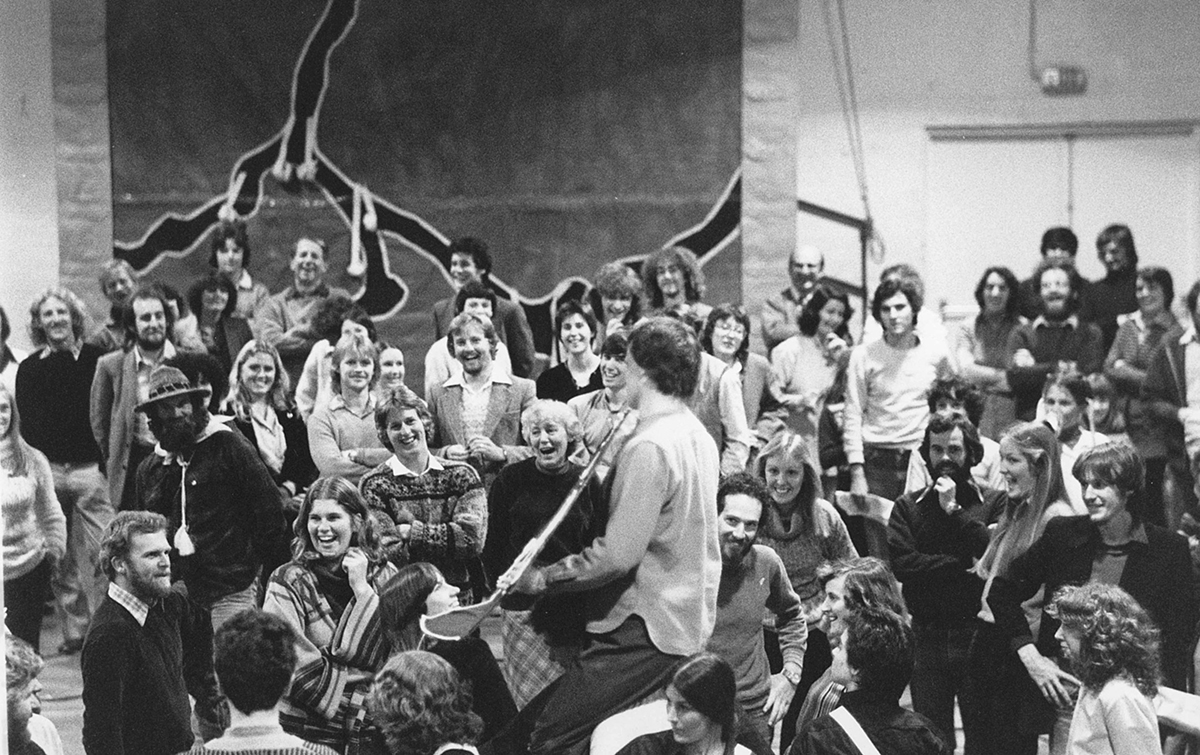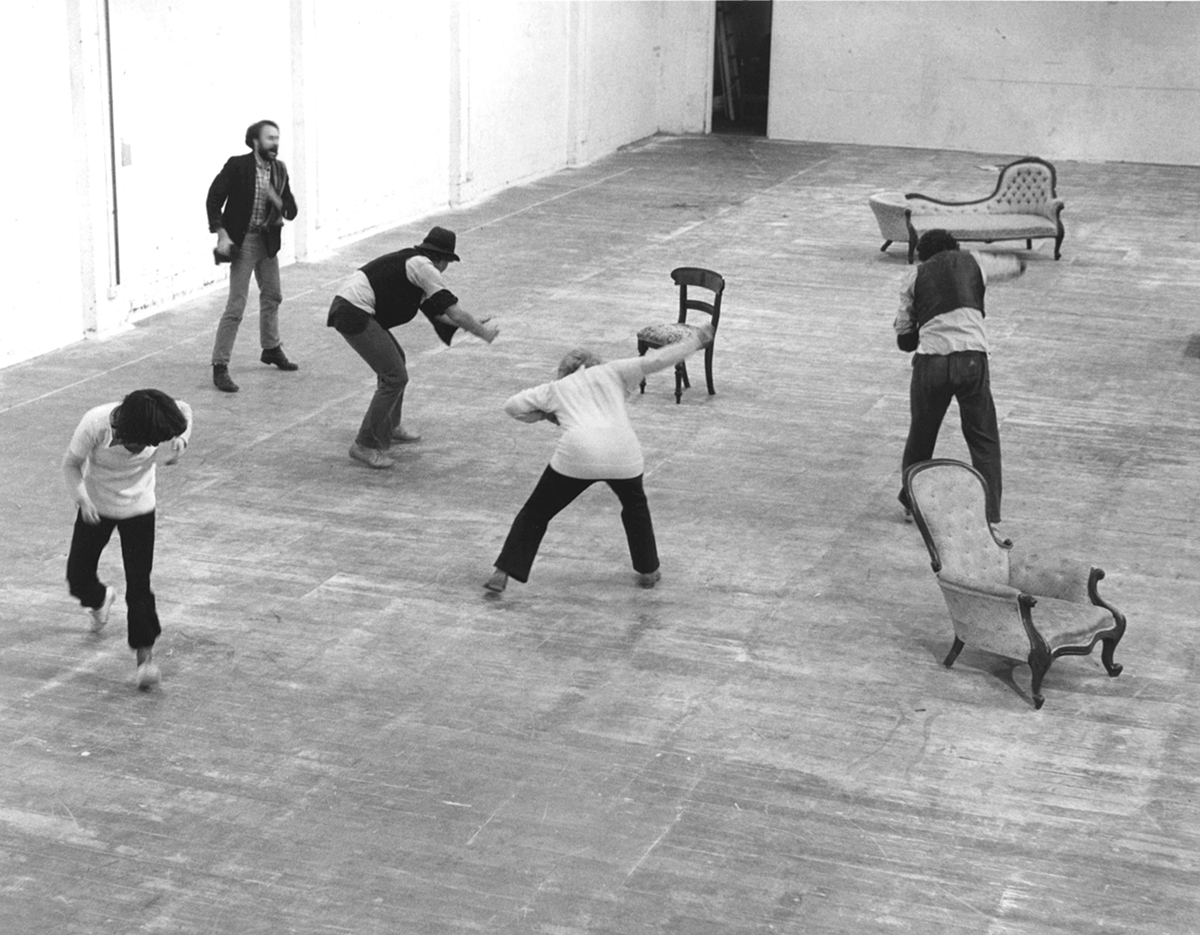Prior to the 1970s few, if any, Australian regional cities could boast their own professional theatre company resident in a dedicated venue and producing ground-breaking experimental work. With The Mill Community Theatre, Geelong in Victoria was one of those few. Meredith Rogers’ book The Mill: Experiments in Theatre and Community, presents a reflection on and close analysis of one of the pioneering community theatre companies in Australia.
The late 1970s was a period of rapid expansion for theatre in Victoria, with the Australian Performing Group, the Melbourne Theatre Company, a thriving live comedy scene and the seeds of the professional community theatre movement beginning to germinate. Around Australia companies such as Sidetrack and the Popular Theatre Troupe developed strategies for engaging and developing new audiences from their local geographical area. In Melbourne this included W.E.S.T., the Murray River Performing Group (MRPG) and Theatre Works, all driven by graduates of the Peter Oyston-led VCA School of Drama, companies that would go on to make important contributions to fringe and alternative theatre in the 1980s.
As the Oyston course was launching in the mid 70s, James McCaughey had been working at Deakin University in Geelong to establish a new drama studies course which included provision for a university-owned and operated theatre space in The Mill building (a decommissioned woollen mill) on Pakington Street. Out of that space, McCaughey launched The Mill Community Theatre and along with an evolving core of theatremakers, worked to make new performance for, about and with the local residents of the Geelong community.

The Burning of Bentley’s Hotel (1979), The Mill Community Theatre Project, photo Ian Fox
Rogers quotes McCaughey: “the great splurge of Australian theatre in the 1960s…had run its course…I was beginning to realise how much very good energy was being created in the new theatre of the 1960s and that a very great deal of Australian society was untouched by anything that happened there. I didn’t feel I wanted to be part of a ghetto art form. So one of the things that took me to Geelong was [a desire] to experiment with how theatre could matter; how it could address and be addressed by a much wider society.” This would form the central ethic of his work with The Mill. To work towards a theatre with local relevance and reaching a wide audience. To use local histories and collected contemporary experiences gathered through research and consultative practice and then given dramatic structure and represented on stage.
Many of the community companies tended to operate in relative isolation, and so each developed individual approaches to the problems of community-based theatre. They introduced new inclusive practices of audience engagement and more transgressive performance interventions, such as inviting the audience to become participating performers in the world and moving performance out of the theatre into the surrounding environment. If theatre was to be vital, it had to engage. It had to mean something personal to those watching.
Rogers’ book recounts the histories and theories that underpinned the work and the ethic of The Mill Company and its approach to community engagement and theatrical intervention. Her participation as one of the company members gives her writing a sense of embodied experience of its practice, as well as bringing a maker’s eye to the analysis of the company’s history and practices. Throughout there are many personal recollections from Rogers and others of particular works and moments of practice that stand out from the drier academic analysis and give a valuable insight into the day-to-day running of the company and its artists as people.
Rogers divides the book into discrete chapters, focusing on aspects of the company in detail. She includes a reflection on the development of community theatre itself in Australia, connecting it with antecedents in the UK, as in the work of Joan Littlewood and Peter Cheeseman; the Mill building itself, the citizens of Geelong and how they impacted on the company; a close description and reflection on the history plays — the traditionally staged performances developed by the company from Geelong’s own history; and a detailed reflection on the Mill’s public workshops series, the legendary Mill Nights.

Fighting the fire at Inverleigh (1979), The Mill Community Theatre Project, photo Ian Fox
Mill Nights were regular open workshops in which the local community were invited to participate in what the company had prepared on a weekly basis. Rogers describes this night as a “simple sounding premise — that the people the company came in contact with would want to make their own theatre and that we could share our resources in order to make this happen.” The workshops initially focused on skills development but gradually gave way to large-scale participatory impromptu performance games, in which the company and the community playfully re-enacted and recreated classic movies, historic events and canonical narratives.
The end of the company, as a result of the wave of funding cuts which began in 1987, is not extensively explored. Rather, Rogers closes on the company’s many heirs and descendants, including the internationally recognised, and still Geelong-based, Back to Back Theatre.
The principles that held communities together only a few decades ago, based on locality and shared experiences, have grown increasingly diffuse and non-locative in the digital age. In response, community theatre models have evolved over time to serve communities of shared interest (such as workplace, gender and cultural identity) rather than geographic proximity.
The Mill: Experiments in Theatre and Community is a vital contribution to the history of Australian theatre, documenting an influential and ground-breaking Australian theatre company. Meredith Rogers’ book is an important unearthing of community engagement and theatremaking practice. In a post-digital age, it may be worth returning to some of these practices of community rooted in locality. Companies like The Mill — and the ethics, aesthetics and practices of the professional community theatre — might offer us a way to better understand what new models of sustainability might be.
–
Meredith Rogers, The Mill: Experiments in Theatre and Community, Australian Scholarly Publications, 2016
Meredith Rogers joined The Mill Community Theatre as actor and General Manager in 1979 and two years later she was a founding member of the Home Cooking Theatre Co, a professional feminist theatre company. She has acted in, designed and directed numerous productions, has taught in the Theatre and Drama Program at La Trobe University and written extensively on performance.
Robert Reid is a playwright, academic and theatremaker. He is Artistic Director of the Melbourne-based New Games collective, Pop Up Playground. He has written about game playing theatre in the UK for RealTime.
Top image credit: Members of The Mill Community Theatre Project working on Chairs, photo Peter Wilson



